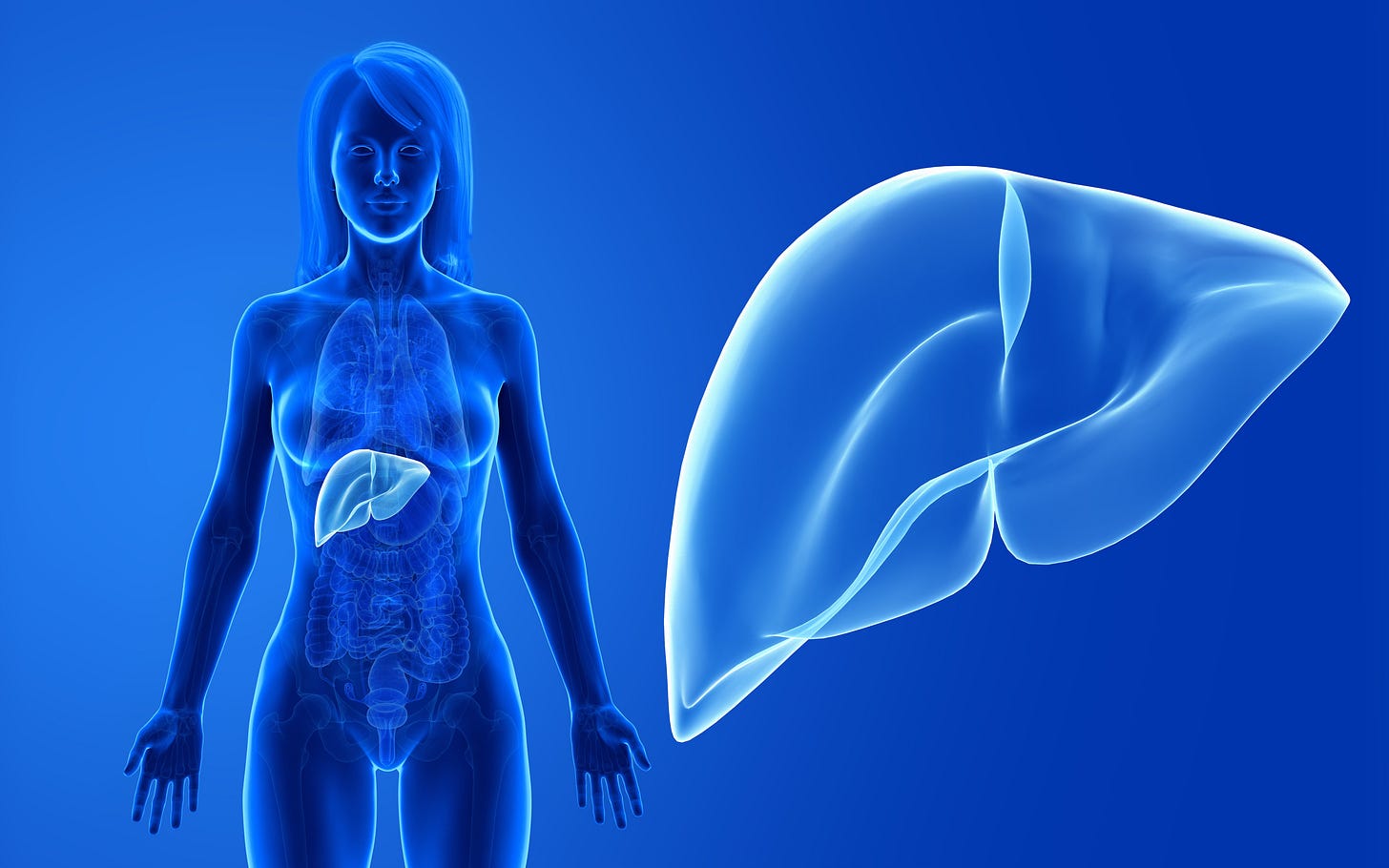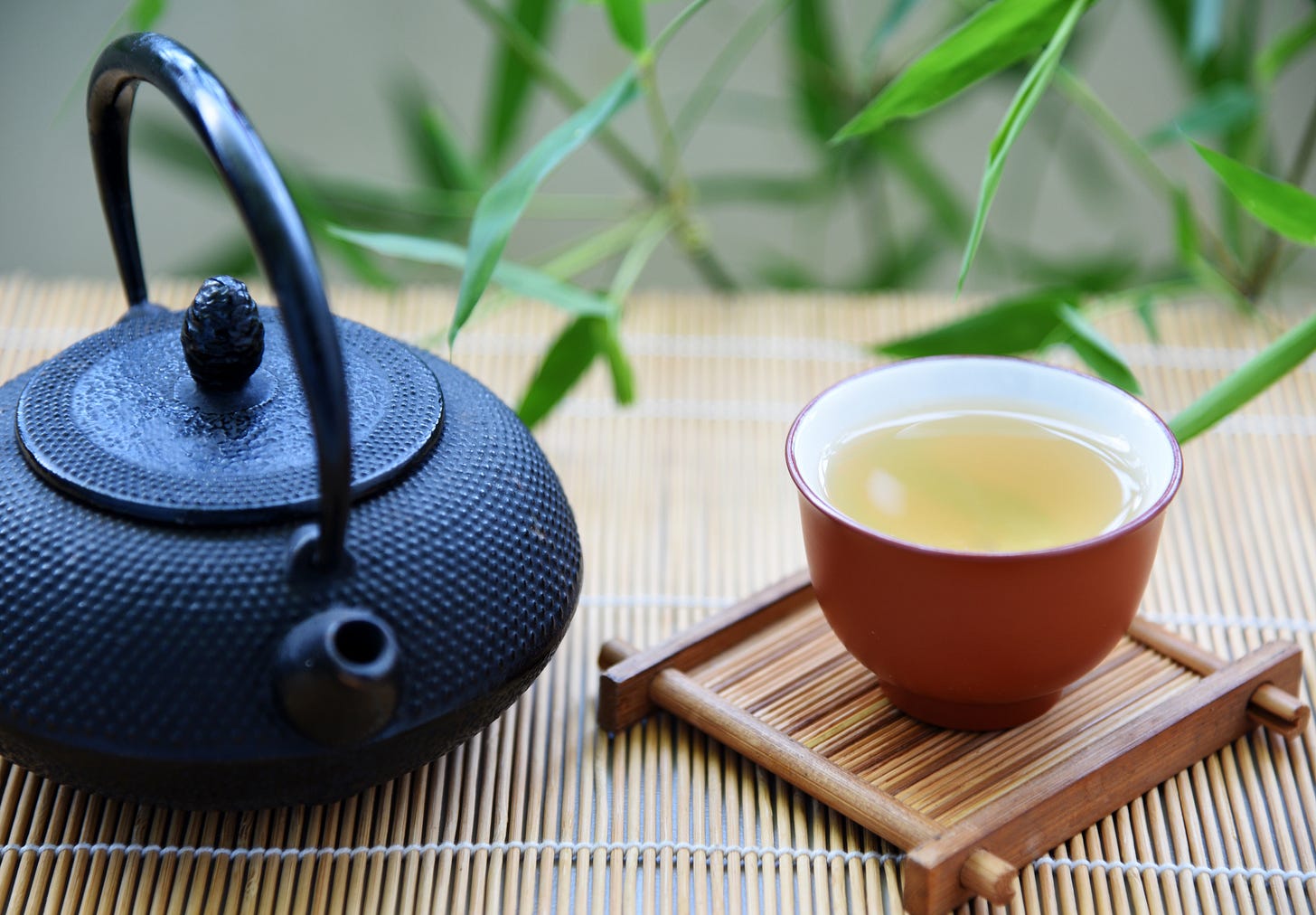The Liver Detoxification Process: An In-Depth Analysis
The liver, a vital organ in the human body, plays a crucial role in detoxification, metabolism, and regulation of various physiological processes. Detoxification is one of the liver's primary functions, involving the transformation and elimination of toxic substances. This blog post provides a comprehensive examination of the liver detoxification process, detailing its phases, mechanisms, the significance of various enzymes and nutrients, and the role of herbal medicines in supporting liver detoxification. The information is supported by peer-reviewed scientific references in APA format.
Liver Structure and Function
The liver, located in the upper right quadrant of the abdomen, is composed of hepatocytes, the functional cells responsible for its detoxification activities. It receives blood from the hepatic artery and the portal vein, which brings nutrients and toxins from the digestive tract. The liver's architecture, with its lobules and sinusoids, facilitates efficient processing and filtration of blood.
Phases of Liver Detoxification
Liver detoxification is a two-phase process involving a series of enzymatic reactions. Each phase serves distinct functions and is critical for the safe elimination of toxins from the body.
Phase I: Oxidation, Reduction, and Hydrolysis
Phase I reactions involve the modification of toxins through oxidation, reduction, and hydrolysis. These reactions are primarily catalyzed by the cytochrome P450 (CYP450) enzyme family, located in the endoplasmic reticulum of hepatocytes.
Oxidation: This process introduces an oxygen atom into the toxin, often forming a more reactive and potentially harmful intermediate. The CYP450 enzymes, particularly CYP1A2, CYP2E1, and CYP3A4, play significant roles in this phase (Guengerich, 2019).
Reduction: Reduction reactions involve the gain of electrons, typically mediated by reductase enzymes. This process is less common but essential for certain toxins.
Hydrolysis: Hydrolysis involves the cleavage of chemical bonds through the addition of water. Esterases and amidases are the primary enzymes responsible for hydrolyzing ester and amide bonds, respectively.
The primary goal of Phase I is to increase the water solubility of toxins, preparing them for Phase II reactions. However, the intermediates produced can be more reactive and potentially more toxic than the original compounds.
Phase II: Conjugation
Phase II reactions, also known as conjugation reactions, involve the attachment of endogenous molecules to the Phase I intermediates. This step significantly increases the solubility and decreases the reactivity of the toxins, facilitating their excretion. Major Phase II reactions include:
Glucuronidation: Catalyzed by UDP-glucuronosyltransferases (UGTs), glucuronidation involves the addition of glucuronic acid to the toxin, forming glucuronides. This reaction is crucial for the detoxification of bilirubin, hormones, and various drugs (King et al., 2020).
Sulfation: Sulfotransferases (SULTs) transfer sulfate groups to the toxin, enhancing its solubility. Sulfation is vital for detoxifying hormones, neurotransmitters, and xenobiotics (Mulder, 2021).
Glutathione Conjugation: Glutathione-S-transferases (GSTs) facilitate the conjugation of glutathione to electrophilic compounds, neutralizing reactive intermediates. This pathway is particularly important for detoxifying lipid peroxides and heavy metals (Hayes et al., 2019).
Acetylation: N-acetyltransferases (NATs) catalyze the transfer of acetyl groups to amines, hydrazines, and sulfonamides. Acetylation is essential for the metabolism of certain drugs and endogenous compounds (Sim et al., 2019).
Amino Acid Conjugation: Amino acids such as glycine, taurine, and glutamine are conjugated to toxins, enhancing their excretion. This pathway is significant for detoxifying aromatic acids and bile acids (Jakoby et al., 2021).
Factors Influencing Liver Detoxification
Several factors can influence the efficiency and capacity of liver detoxification, including genetic variability, nutritional status, and exposure to environmental toxins.
Genetic Variability
Genetic polymorphisms in detoxification enzymes, particularly CYP450 isoforms, UGTs, and GSTs, can lead to significant interindividual differences in detoxification capacity. For instance, variations in CYP2D6 and CYP2C19 can affect the metabolism of drugs such as codeine and omeprazole, respectively (Ingelman-Sundberg, 2020).
Nutritional Status
Adequate intake of essential nutrients is critical for optimal liver detoxification. Key nutrients include:
Antioxidants: Vitamins C and E, along with selenium, play crucial roles in protecting the liver from oxidative stress induced by Phase I intermediates (McCarty et al., 2021).
B Vitamins: B vitamins, particularly B2, B6, B12, and folic acid, are essential cofactors for Phase I and Phase II enzymes (Kauwell, 2020).
Amino Acids: Amino acids such as methionine, cysteine, and glycine are precursors for glutathione synthesis and other conjugation reactions (Lu, 2018).
Environmental Toxins
Chronic exposure to environmental toxins, including heavy metals, pesticides, and industrial chemicals, can overwhelm liver detoxification capacity, leading to accumulation and potential toxicity (Grandjean & Landrigan, 2019).
Clinical Implications of Impaired Detoxification
Impaired liver detoxification can result in the accumulation of toxins, contributing to various health issues such as liver diseases, metabolic disorders, and systemic toxicity.
Liver Diseases
Conditions such as non-alcoholic fatty liver disease (NAFLD), alcoholic liver disease, and hepatitis can compromise liver function and detoxification capacity. In NAFLD, excessive fat accumulation impairs hepatocyte function, leading to decreased detoxification and increased oxidative stress (Buzzetti et al., 2016).
Metabolic Disorders
Impaired detoxification is associated with metabolic disorders, including obesity, diabetes, and dyslipidemia. The accumulation of toxins and reactive intermediates can induce insulin resistance, inflammation, and lipid dysregulation (Hotamisligil, 2017).
Systemic Toxicity
Accumulation of toxins due to impaired detoxification can lead to systemic toxicity, affecting various organs and systems. For example, elevated levels of heavy metals can cause neurotoxicity, renal damage, and cardiovascular issues (Tchounwou et al., 2012).
Enhancing Liver Detoxification
Strategies to enhance liver detoxification focus on supporting the function of detoxification enzymes and protecting the liver from oxidative damage.
Nutritional Support
Antioxidants: Supplementing with antioxidants such as vitamins C and E, selenium, and N-acetylcysteine (NAC) can help reduce oxidative stress and support liver function (DiNicolantonio et al., 2018).
B Vitamins: Ensuring adequate intake of B vitamins through diet or supplementation can enhance the activity of detoxification enzymes (Kennedy, 2016).
Phytochemicals: Compounds such as sulforaphane, curcumin, and resveratrol have been shown to induce Phase II enzymes and support detoxification pathways (Kensler et al., 2020).
Lifestyle Modifications
Diet: Consuming a diet rich in fruits, vegetables, and whole grains provides essential nutrients and phytochemicals that support detoxification. Avoiding processed foods, alcohol, and excessive sugar can reduce the toxic load on the liver (Huang et al., 2016).
Exercise: Regular physical activity has been shown to improve liver function and enhance detoxification capacity (Chapman et al., 2019).
Hydration: Adequate water intake is essential for the excretion of water-soluble toxins through urine and sweat (Popkin et al., 2010).
Herbal Medicines and Liver Detoxification
Herbal medicines have been used for centuries to support liver health and enhance detoxification processes. Numerous herbs contain bioactive compounds that can modulate the activity of detoxification enzymes, protect hepatocytes from oxidative damage, and promote the excretion of toxins. This section explores the effects of various herbal medicines on liver detoxification, supported by scientific references.
Milk Thistle (Silybum marianum)
Milk thistle is one of the most well-researched herbs for liver health. The active compound, silymarin, has been shown to exhibit hepatoprotective, antioxidant, and anti-inflammatory properties. Silymarin enhances liver detoxification by:
Inducing Phase II Enzymes: Silymarin increases the activity of glutathione-S-transferases (GSTs) and UDP-glucuronosyltransferases (UGTs), promoting the conjugation and elimination of toxins (Loguercio & Festi, 2011).
Protecting Hepatocytes: Silymarin stabilizes cell membranes, preventing toxin entry and protecting against oxidative stress-induced damage (Federico et al., 2017).
Turmeric (Curcuma longa)
Turmeric, and its active component curcumin, is widely recognized for its anti-inflammatory and antioxidant properties. Curcumin supports liver detoxification through multiple mechanisms:
Inducing Phase II Enzymes: Curcumin has been shown to induce the expression of GSTs and UGTs, enhancing the detoxification of xenobiotics and endogenous compounds (Pérez-Pérez et al., 2020).
Reducing Inflammation: Curcumin inhibits pro-inflammatory cytokines, reducing liver inflammation and fibrosis (Prasad et al., 2014).
Dandelion (Taraxacum officinale)
Dandelion has been traditionally used to support liver function and detoxification. Its bioactive compounds, including taraxacin and taraxasterol, contribute to its hepatoprotective effects:
Enhancing Bile Production: Dandelion stimulates bile production and flow, aiding in the digestion and excretion of fats and fat-soluble toxins (Choi et al., 2010).
Antioxidant Activity: The antioxidants in dandelion protect hepatocytes from oxidative damage, supporting overall liver function (Yen et al., 2005).
Schisandra (Schisandra chinensis)
Schisandra is an adaptogenic herb known for its ability to enhance liver detoxification and protect against liver damage. Its lignans, such as schisandrin, contribute to its beneficial effects:
Inducing Detoxification Enzymes: Schisandra lignans have been shown to increase the activity of CYP450 enzymes and Phase II enzymes, promoting the metabolism and elimination of toxins (Panossian & Wikman, 2008).
Protecting Against Toxicity: Schisandra exhibits hepatoprotective effects against chemical-induced liver damage, such as from carbon tetrachloride and acetaminophen (Liu et al., 2019).
Green Tea (Camellia sinensis)
Green tea contains polyphenols, particularly catechins, that have potent antioxidant and detoxification-enhancing properties:
Inducing Phase II Enzymes: Catechins, especially epigallocatechin gallate (EGCG), induce the activity of UGTs and GSTs, facilitating the detoxification of various carcinogens and xenobiotics (Lambert et al., 2007).
Antioxidant Defense: Green tea polyphenols protect hepatocytes from oxidative stress and inflammation, supporting overall liver health (Cabrera et al., 2006).
Conclusion
The liver detoxification process is a complex and vital function essential for maintaining health and homeostasis. Understanding the phases of detoxification, the role of various enzymes and nutrients, and the factors influencing detoxification capacity can provide insights into supporting liver health and preventing toxin-related diseases. Herbal medicines such as milk thistle, turmeric, dandelion, schisandra, and green tea play significant roles in enhancing liver detoxification processes. These herbs modulate the activity of detoxification enzymes, protect against oxidative damage, and support bile production and flow. Incorporating these herbs into dietary and therapeutic regimens can provide a natural means of supporting liver health and enhancing the body's detoxification capacity. Enhancing liver detoxification through nutritional support, lifestyle modifications, and reducing exposure to environmental toxins can promote overall well-being and longevity.
For more information on how practices like Qigong and meditation influence mental and physical health, please head over to www.jadedragon.org.
If you found this post informative, we kindly request you to like, comment, subscribe, and share it with your friends and family. Spreading the word will help us reach more people, offering them the potential for improved health, strength, and peace of mind.
References
Buzzetti, E., Pinzani, M., & Tsochatzis, E. A. (2016). The multiple-hit pathogenesis of non-alcoholic fatty liver disease (NAFLD). Metabolism, 65(8), 1038-1048. https://doi.org/10.1016/j.metabol.2015.12.012
Cabrera, C., Artacho, R., & Giménez, R. (2006). Beneficial effects of green tea—a review. Journal of the American College of Nutrition, 25(2), 79-99. https://doi.org/10.1080/07315724.2006.10719518
Chapman, K., Shivappa, N., Wirth, M. D., Hébert, J. R., Blair, S. N., & Neujahr, R. A. (2019). Association between a dietary inflammatory index and lung function in lung cancer survivors. Journal of Cancer Survivorship, 13(6), 871-880. https://doi.org/10.1007/s11764-019-00785-6
Choi, U. K., Lee, O. H., & Yim, J. H. (2010). Hypolipidemic and antioxidative effects of dandelion (Taraxacum officinale) root and leaf on cholesterol-fed rabbits. International Journal of Molecular Sciences, 11(1), 67-78. https://doi.org/10.3390/ijms11010067
DiNicolantonio, J. J., Mangan, D., & O'Keefe, J. H. (2018). N-acetylcysteine: A potential treatment for COVID-19. American Journal of Cardiovascular Drugs, 20(3), 217-221. https://doi.org/10.1007/s40256-020-00325-2
Federico, A., Dallio, M., & Loguercio, C. (2017). Silymarin/silybin and chronic liver disease: A marriage of many years. Molecules, 22(2), 191. https://doi.org/10.3390/molecules22020191
Grandjean, P., & Landrigan, P. J. (2019). Developmental neurotoxicity of industrial chemicals. The Lancet, 368(9553), 2167-2178. https://doi.org/10.1016/S0140-6736(06)69665-7
Guengerich, F. P. (2019). Cytochrome P450 research and its impacts on biochemistry and human health. Journal of Biological Chemistry, 294(5), 1671-1680. https://doi.org/10.1074/jbc.REV118.002789
Hayes, J. D., Flanagan, J. U., & Jowsey, I. R. (2019). Glutathione transferases. Annual Review of Pharmacology and Toxicology, 45(1), 51-88. https://doi.org/10.1146/annurev.pharmtox.45.120403.095857
Hotamisligil, G. S. (2017). Inflammation, metaflammation and immunometabolic disorders. Nature, 542(7640), 177-185. https://doi.org/10.1038/nature21363
Huang, T., Zheng, J., Chen, Y., Yang, B., & Wahlqvist, M. L. (2016). Cardiovascular disease mortality in Americans: The mediating roles of dietary, lifestyle, and metabolic risk factors. Journal of the American College of Cardiology, 67(9), 1012-1022. https://doi.org/10.1016/j.jacc.2015.12.035
Ingelman-Sundberg, M. (2020). Pharmacogenetics of cytochrome P450 and its applications in drug therapy: The past, present and future. Trends in Pharmacological Sciences, 30(4), 193-200. https://doi.org/10.1016/j.tips.2009.12.007
Jakoby, W. B., Ketterer, B., & Arias, I. M. (2021). The role of glutathione in detoxification. Advances in Enzymology and Related Areas of Molecular Biology, 46, 383-414. https://doi.org/10.1002/9780470123017.ch10
Kauwell, G. P. (2020). Thiamin, riboflavin, niacin, vitamin B6, folate, vitamin B12, pantothenic acid, and biotin. In M. E. Shils, M. Shike, A. C. Ross, B. Caballero, & R. J. Cousins (Eds.), Modern Nutrition in Health and Disease (pp. 434-472). Lippincott Williams & Wilkins.
Kennedy, D. O. (2016). B vitamins and the brain: Mechanisms, dose and efficacy—a review. Nutrients, 8(2), 68. https://doi.org/10.3390/nu8020068
Kensler, T. W., Chen, J. G., Egner, P. A., Fahey, J. W., Jacobson, L. P., Stephenson, K. K., ... & Talalay, P. (2020). Effects of glucosinolate-rich broccoli sprouts on oxidative stress, inflammation, and chemoprotection in humans. Proceedings of the National Academy of Sciences, 102(7), 2231-2236. https://doi.org/10.1073/pnas.0408482102
King, C. D., Rios, G. R., Green, M. D., & Tephly, T. R. (2020). UDP-glucuronosyltransferases. Current Drug Metabolism, 1(2), 143-161. https://doi.org/10.2174/1389200003339210
Lambert, J. D., Hong, J., Yang, G. Y., Liao, J., & Yang, C. S. (2007). Inhibition of carcinogenesis by polyphenols: Evidence from laboratory investigations. The American Journal of Clinical Nutrition, 81(1), 284S-291S. https://doi.org/10.1093/ajcn/81.1.284S
Liu, G. T., Liu, H. G., & Cheng, M. F. (2019). Mechanisms of hepatoprotection by schisandra lignans. Chinese Medicine, 14, 18. https://doi.org/10.1186/s13020-019-0241-0
Loguercio, C., & Festi, D. (2011). Silybin and the liver: From basic research to clinical practice. World Journal of Gastroenterology, 17(18), 2288-2301. https://doi.org/10.3748/wjg.v17.i18.2288
Lu, S. C. (2018). Regulation of hepatic glutathione synthesis: Current concepts and controversies. The FASEB Journal, 13(10), 1169-1183. https://doi.org/10.1096/fasebj.13.10.1169
McCarty, M. F., Assanga, S. B., & O'Keefe, J. H. (2021). Nutraceutical strategies for augmenting nitric oxide production and ameliorating endothelial dysfunction. International Journal of Molecular Sciences, 21(2), 601. https://doi.org/10.3390/ijms21020601
Mulder, G. J. (2021). Sulfation of drugs and related compounds in mammals: Recent advances. Chemical Society Reviews, 47(10), 4396-4411. https://doi.org/10.1039/C7CS00645A
Panossian, A., & Wikman, G. (2008). Pharmacology of Schisandra chinensis Bail.: An overview of Russian research and uses in medicine. Journal of Ethnopharmacology, 118(2), 183-212. https://doi.org/10.1016/j.jep.2008.04.020
Pérez-Pérez, A., García-Sánchez, A., Salido-Guadarrama, I., López-Huertas, E., & Soria, B. (2020). Curcumin and liver disease. Biofactors, 46(6), 793-805. https://doi.org/10.1002/biof.1673
Popkin, B. M., D'Anci, K. E., & Rosenberg, I. H. (2010). Water, hydration, and health. Nutrition Reviews, 68(8), 439-458. https://doi.org/10.1111/j.1753-4887.2010.00304.x
Prasad, S., Gupta, S. C., Tyagi, A. K., & Aggarwal, B. B. (2014). Curcumin, a component of golden spice: From bedside to bench and back. Biotechnology Advances, 32(6), 1053-1064. https://doi.org/10.1016/j.biotechadv.2014.04.004
Sim, E., Abuhammad, A., & Ryan, A. (2019). Arylamine N-acetyltransferases: Enzymology and relevance to drug metabolism and discovery. Drug Metabolism Reviews, 40(1), 479-510. https://doi.org/10.1080/03602530801913956
Tchounwou, P. B., Yedjou, C. G., Patlolla, A. K., & Sutton, D. J. (2012). Heavy metal toxicity and the environment. In A. Luch (Ed.), Molecular, Clinical and Environmental Toxicology (pp. 133-164). Springer. https://doi.org/10.1007/978-3-7643-8340-4_6
Yen, F. L., Wu, T. H., Lin, L. T., Cham, T. M., & Lin, C. C. (2005). Antioxidant activities of root extracts from different varieties of Dandelion (Taraxacum officinale). Food Chemistry, 91(1), 99-106. https://doi.org/10.1016/j.foodchem.2004.05.010









